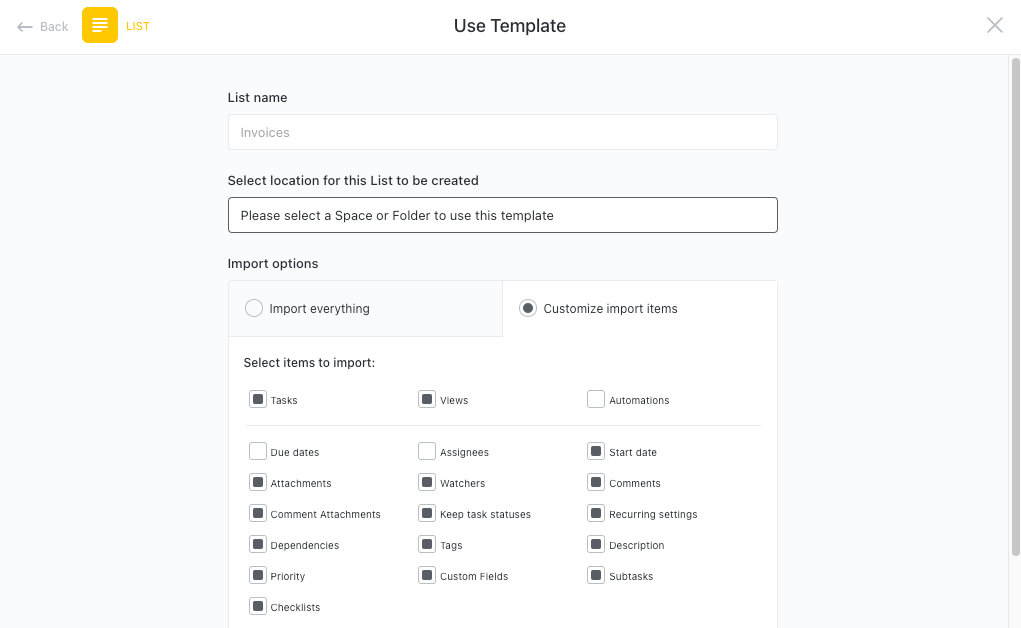Project plans can be complex, time-consuming, and difficult to manage. Having a template that is easy to use and fully customizable can make your project planning process more efficient and organized.
ClickUp's example project plan template helps you avoid any unnecessary headaches by providing everything you need in one powerful tool. With this template, you'll be able to:
- Create detailed plans with intuitive visuals
- Organize tasks for efficient collaboration among teams
- Track progress against goals for timely completion of the project
Whether you're managing a small team or a large company, ClickUp's example project plan template will help make sure all of your projects are successful!
Benefits of an Example Project Plan Template
Project plans are essential to successful project delivery. When you use a project plan template, you can:
- Easily create a timeline that outlines specific tasks and milestones
- Ensure that tasks are completed in the right order and on schedule
- Identify dependencies between tasks, allowing you to plan more efficiently
- Keep everyone on the same page by sharing the plan with stakeholders
Main Elements of an Example Project Plan Template
ClickUp's Example Project Plan Template is designed to help you plan and execute projects in one place. This List template includes:
- Custom Statuses: Create tasks with custom statuses such as Complete, In Progress, and To Do to keep track of the progress of each step in the project
- Custom Fields: Categorize and add attributes to manage your tasks and easily visualize the different sections of the project, such as Section, Appendix, Impact Level, Effort Level, and Department
- Custom Views: Open 3 different views in different ClickUp configurations, such as the Getting Started Guide, Planning Progress, and Project Plan Template so that you can hit the ground running
- Project Management: Improve project planning with time tracking capabilities, tags, dependency warning, emails, and more
How to Use an Example Project Plan Template
Creating a project plan for your team can be a daunting task. But by following the steps outlined below, you’ll have your project plan up and running in no time:
1. Set clear goals
It's important to set clear goals and objectives for your project before you start. This will help to provide direction and focus, and ensure that everyone is on the same page.
Create a Doc in ClickUp to list out all of your project goals.
2. Break down the project into tasks
Once you have your goals in place, break the project down into individual tasks. This will help to keep everyone organized and ensure that all tasks have a specific deadline.
Create tasks in ClickUp with due dates for each task.
3. Assign tasks
Once you have your tasks in place, it's time to assign them to the right people. Make sure everyone has a list of tasks assigned to them, so that they know what they need to do and when it needs to be done.
Use the Assignee feature in ClickUp to easily assign tasks to the right people.
4. Monitor progress
Monitor progress regularly to ensure that the project is on track. You can also use this opportunity to make any necessary changes and adjust your plan accordingly.
Use the Board view in ClickUp to quickly and easily monitor the progress of your project.
Get Started with ClickUp's Example Project Plan Template
Project managers can use this Example Project Plan Template to help everyone stay on the same page when it comes to creating and managing a project plan.
First, hit “Add Template” to sign up for ClickUp and add the template to your Workspace. Make sure you designate which Space or location in your Workspace you’d like this template applied.
Next, invite relevant members or guests to your Workspace to start collaborating.

Now you can take advantage of the full potential of this template to create a successful project plan:
- Use the Getting Started Guide View to get an overview of the project plan process
- The Planning Progress View will help you keep track of your progress and make sure you stay on track
- The Project Plan Template View will provide a template for you to customize and implement the project plan
- Organize tasks into three different statuses: Complete, In Progress, To Do, to keep track of progress
- Update statuses as you progress through tasks to keep stakeholders informed of progress
- Hold regular meetings to discuss progress and any issues
- Monitor and analyze tasks to ensure maximum productivity
Get Started with Our Example Project Plan Template Today







